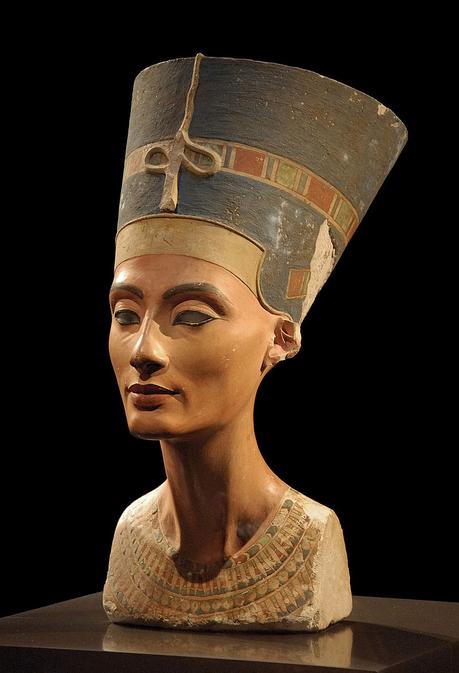 The Egyptian queen Nefertiti has long been held in high regard by historians, Egyptologists, and archaeologists alike. Legendary her for her beauty, Nefertiti was the wife of the Pharaoh Akhenaten, who ruled the country from 17 years. During their reign, Egypt shifted from a pantheon of gods, to the worship of a single god, bringing monotheism to the Egyptian people for the first time.
The Egyptian queen Nefertiti has long been held in high regard by historians, Egyptologists, and archaeologists alike. Legendary her for her beauty, Nefertiti was the wife of the Pharaoh Akhenaten, who ruled the country from 17 years. During their reign, Egypt shifted from a pantheon of gods, to the worship of a single god, bringing monotheism to the Egyptian people for the first time.Nefertiti reigned alongside her husband and she had unprecedented power as compared to most women. Ancient Egypt was a patriarchal society, and while women were generally held in high regard, the seldom were allowed to rule the country. But Nefertiti was an exception to that rule, and as queen she curried great favor with the king and his court.
But what exactly happened to this powerful woman remains a mystery. Whether she died before her husband or out lived him seems to be a matter of debate, but there did seem to be a concerted attempt to erase her from Egyptian history at one point, which makes it difficult to surmise what became of her. For centuries historians and archaeologists have tried to discover Nefertiti's fate, and while there are plenty of theories, there has been little hard evidence to go on. Her tomb has never been found, and there seems to be little trace of her final resting place – something that is quite odd for a person of her stature.
That might be changing however, as a new theory put fourth by a British archaeologist working at the University of Arizona may finally uncover her tomb at long last. Nicholas Reeves says that by studying digital scans of the tomb of King Tut, he may have found two previously undiscovered "ghost doors" which may lead to another burial chamber beyond.
Tut would have been the next king to succeed Akhenaten, and since he only lived to be about 17 years old, his burial chamber wasn't quite prepared yet at the time of his death. Reeves believes that Tut was placed in a tomb that was originally built for a queen, and that it was hastily walled up to make room for the boy-king instead.
Reeves points to a number of clues to back up his hypothesis. For starters, Tut's tomb was far smaller than was appropriate for a pharaoh, and some of the items found resting with him came from an older era. Both are indications that the tomb may have been previously used for someone else. The design and size of the tomb indicate that it was perhaps meant for a queen of the 18th Dynasty, of which Nefertiti was the last great one.
Reeves' theory has garnered a great deal of buzz within the archeology community. His logic is sound, and there are indications of possible hidden chambers off of Tut's tomb. But it will take some time to confirm whether or not they do exist. Researchers will likely take ground penetrating radar into the tomb to see if there are indeed chambers on the other side of the walls. If they are found, it will take even longer to excavate them, as the process will likely be painstakingly slow so as to not damage the chamber. So,while the final resting place of Nefertiti may be close at hand, it could be years before we know if Reeve is correct. Still, it is an interesting theory to say the least, and it could give us more insight into what became of the legendary queen who remains an enduring enigma even into the 21st century.

